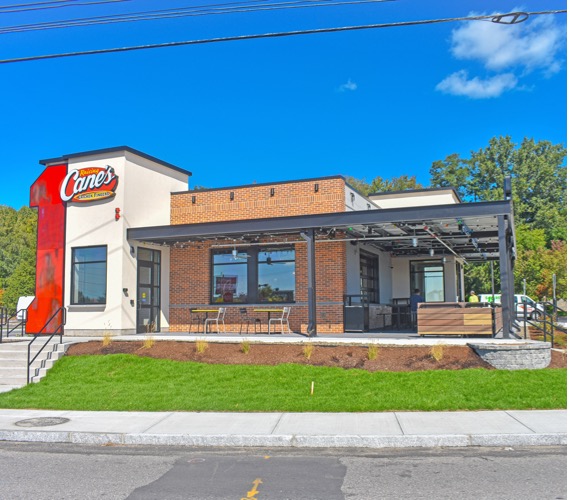Question of the Month: What are the hidden risks with tenant funded leasehold improvements? - by Raymond Pelletier
 Raymond Pelletier, Verrill Dana LLP
Raymond Pelletier, Verrill Dana LLPIn most cases significant tenant fit-ups and renovations are financed by means of a per s/f tenant improvement allowance paid by the landlord and amortized over the term of the lease. Occasionally, however, a landlord may not be willing to take on the financing of the improvements for a variety of reasons, and the tenant may consider contracting and paying for the improvements itself. Doing so creates a number of risks for the tenant beyond the risks ordinarily assumed in having construction work performed. These risks stem from the nature of the leasehold relationship and the typical form of commercial lease. Depending on the amount expended by the tenant for these improvements, these risks can have disastrous financial consequences.
Termination Provisions
Virtually all leases contain provisions that can result in a termination of the lease in certain situations. Examples include default, events of fire or other casualty, or takings by eminent domain. For example, it is common for the landlord (and the tenant) to have a right to terminate the lease if there is significant damage to the building in which the leased premises is situated or if there is a significant taking by eminent domain. A termination of the lease will result in the tenant forfeiting the money it has spent on leasehold improvements. In some cases the tenant may be able to negotiate a modification to certain termination provisions that would allow it to recover from the insurance or eminent domain proceeds the depreciated value of its leasehold improvements. The tenant’s degree of success in such negotiations may depend partly on whether the improvements are of the type that generally benefit the landlord’s property, rather than improvements unique to the use to be made by the tenant. In addition, the negotiation is more difficult if the tenant wants the right to recover the depreciated value of its leasehold improvements in a case in which the tenant is the party terminating the lease. With regard to a termination resulting from a default by the tenant, except in unusual situations the tenant is not likely to be able to negotiate protection against a loss of its investment. In most cases the best the tenant can do is negotiate generous notice and cure rights.
Mortgage Foreclosure
A foreclosure on the property by the landlord’s mortgagee also could result in a termination of the lease. Just as in the case of a termination pursuant to a provision in the lease, a termination caused by a foreclosure of a mortgage would result in the tenant forfeiting the money it has spent on leasehold improvements. It is always advisable for a tenant to obtain a so-called non-disturbance agreement from the landlord’s mortgagee when it enters into a lease in order to prevent a termination of the lease in the event of a foreclosure. The issue is much more complicated, however, when the tenant has expended large sums of money for leasehold improvements. The reason is that even with a non-disturbance agreement in place with the landlord’s mortgagee, the lease might be terminated pursuant to a lease provision, rather than due to a foreclosure of the mortgage. For example, suppose there is a fire or other casualty that results in the lease being terminated. Perhaps the tenant has managed to negotiate a provision in its lease that allows it to recover the depreciated value of its leasehold improvements in such a case. The landlord’s mortgage, however, is sure to contain provisions giving the mortgagee the right to decide what happens to those proceeds. Therefore, a tenant investing significant sums toward leasehold improvements will want the mortgagee to agree to honor the provisions in the lease, allowing it to recoup the depreciated value of its leasehold improvements. Obtaining such an agreement from the lender may be very difficult.
Title
If the tenant is making a significant financial investment in the property, the quality of the landlord’s title to the property becomes a concern. The risks are analogous to a purchase of real estate, and a title search becomes more important than it would be in a more routine leasing situation. Having a title search done adds to the cost of a lease transaction, but a title search is advisable when investing large sums of money in a property. It may even be advisable to purchase title insurance in order to afford some protection in the event a title problem arises.
Tenants should think very carefully about the risks they will be taking before investing significant sums of money in leasehold improvements. If at all possible the transaction should be structured with a “tenant improvement allowance” paid for by the landlord and amortized over the lease term. If the tenant feels it must go ahead with a transaction in which it will be paying for the improvements, it should consult with legal counsel to discuss the risks more fully and try to address them in the documentation.
Raymond Pelletier, Esq., is an attorney at Verrill Dana LLP, Portland, Me.
Mace of KeyPoint Partners negotiates 36,192 s/f lease for The Picklr at Endicott Square
Danvers, MA KeyPoint Partners (KPP) negotiated a lease with the nation’s premier indoor pickleball venue The Picklr at Endicott Sq. Vice president of retail brokerage Don Mace negotiated the transaction on behalf of the landlord.





.jpg)


.png)